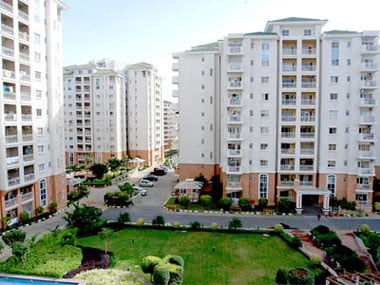Every year when the budget is round the corner, each sector presents its wishlist for the government. Post this Union budget 2017-18 the positive movement on the real estate indices conveyed the sentiment from the budget providing the much-needed push to the realty sector.
Although there was an expectation towards the government acceding to the long pending demand to grant infrastructure status to real estate sector but the same has been given a miss. However, the sentiment after the budget has still been largely affirmative, especially in regards to the steps taken towards dispelling the sluggishness owing to weak demand and impact of demonetization.
One of the path-breaking declarations has been the granting of ‘infrastructure status’ to affordable housing and furthermore, refining the area definition for affordable houses from a built up area to carpet area, thus increasing the number of projects within its ambit. Some of the benefits of infrastructure status include access to long-term funding at lower rates from lending agencies and further increase in the confidence of developers taking up such projects. The change in areas will help increase the consumer base and will definitely impact the decline in cost for consumers looking to buy their dream home.

Representational image
For developers, wherein constructed buildings are stock-in-trade, tax on notional rental income will be applicable after one year of the end of the year in which completion certificate is received. This move will not only give breathing space to the developers but also incentivize them to deplete stock as soon as possible and encourage more rationalization on prices and reduce inventory levels. Further, the government’s proposal to increase the time limit allowed for completion of the project from three years to five years would expand the number of projects eligible for tax incentives.
The infrastructure spending has been provisioned at an all-time high in this Union Budget. The push towards infrastructure continues with the largest-ever allocation to rural housing and improvement of road networks. Modernization of Tier 2 airports and increasing the allocation for metro projects across the country will be instrumental in driving demand in such cities and create planned urban development.
The government has also provided an impetus to smart cities mission with an allocation of 7000 crores, thus paving the way for implementation of such projects. This will drive demand for IT/ITes enabled real estate projects, thus creating a positive impact on the residential and commercial market.
Though most of the steps in the budget have been put in place to improve the supply side factors and provide a much needed fillip to improve the sentiment and reduce the hardships in real estate development, however there has not been anything major to rev up the demand side of the market.
There was no major announcement made to alter the construction costs incurred by the developers. The developer margins may slightly increase on account of low finance costs on affordable housing, but it is anticipated that the construction costs will increase on account of heavy demand from infrastructure sectors, rallied by high demand of cement and steel.
The cost for stainless steel material will come down as the basic custom duty for nickel has been reduced from 2.5 percent to zero. However, the budget has improved pricing by reducing duties on solar tempered glass, fuel cell based power generating systems and wind operated energy generator. Also, the government has not increased the service tax that was being anticipated in some circles with a view to bring it in lines with the GST rates.
The budget along with RERA, GST and other policy reforms is in good stead to pave the way for transparent, customer–centric, accountable and more efficient real estate. The budget also addressed the demand-supply gap in relevant micro-sectors and caters to the end user demand, rather than fulfilling the demand of speculators. The overall sentiment has been welcoming and will lay a foundation towards growth in the affordable housing projects. The model of development is anticipated in moving towards new urban centers and spreading to tier-2 cities riding on airport development, infrastructure, rail and metro network incentives and expenditures being proposed in the budget, thereby reducing pressure on tier-1 cities.
[Source:-Firstpost]




